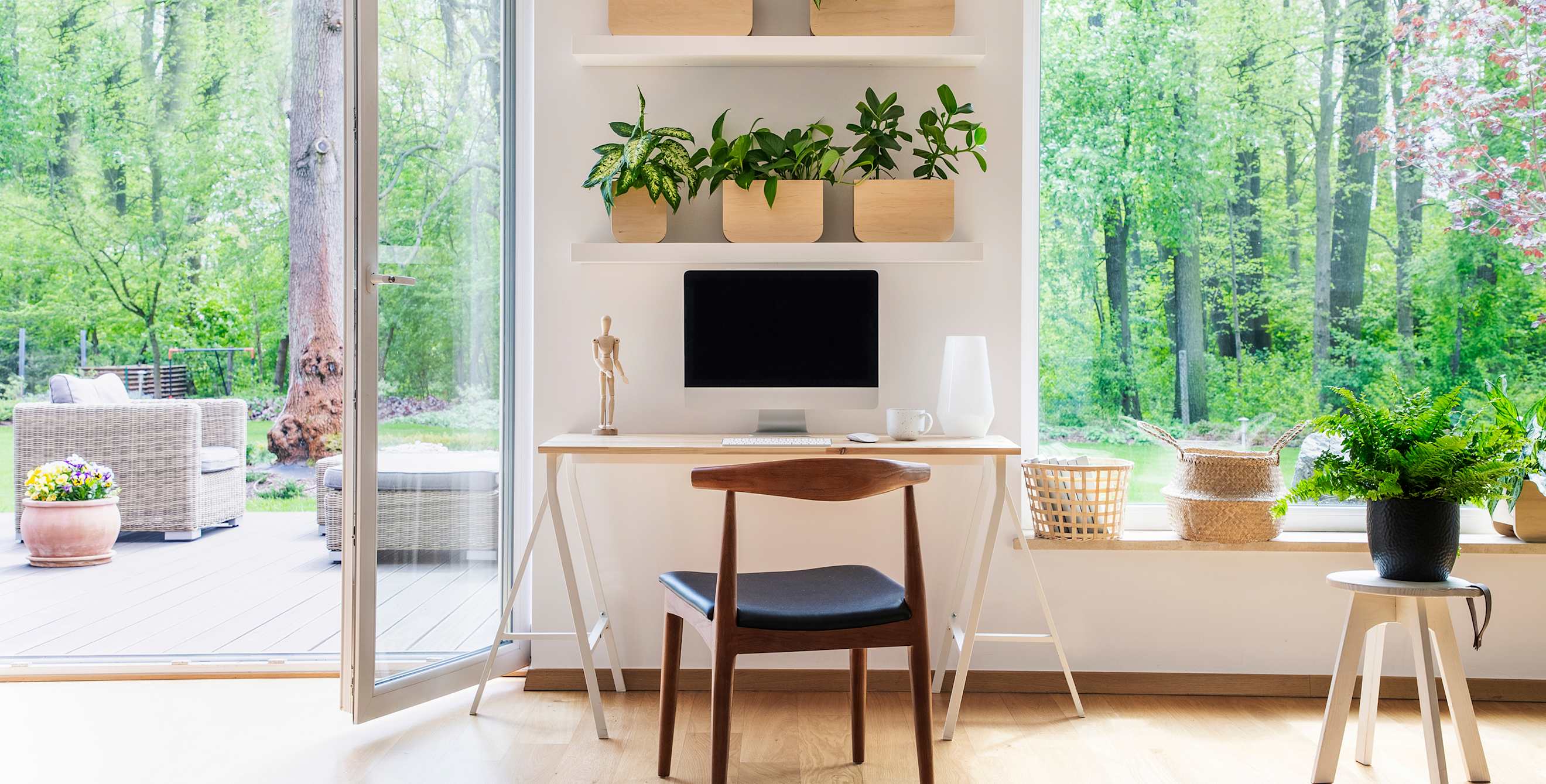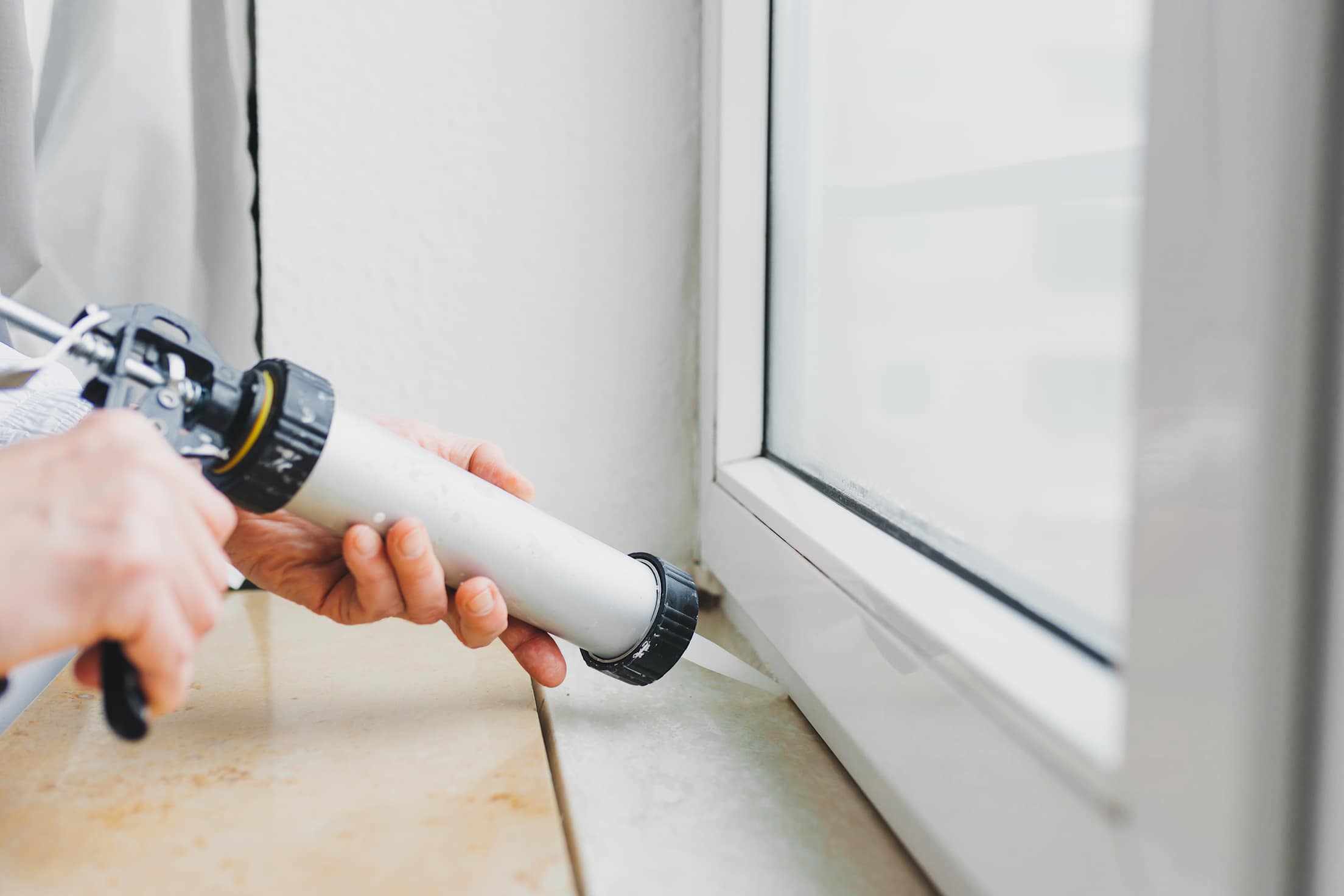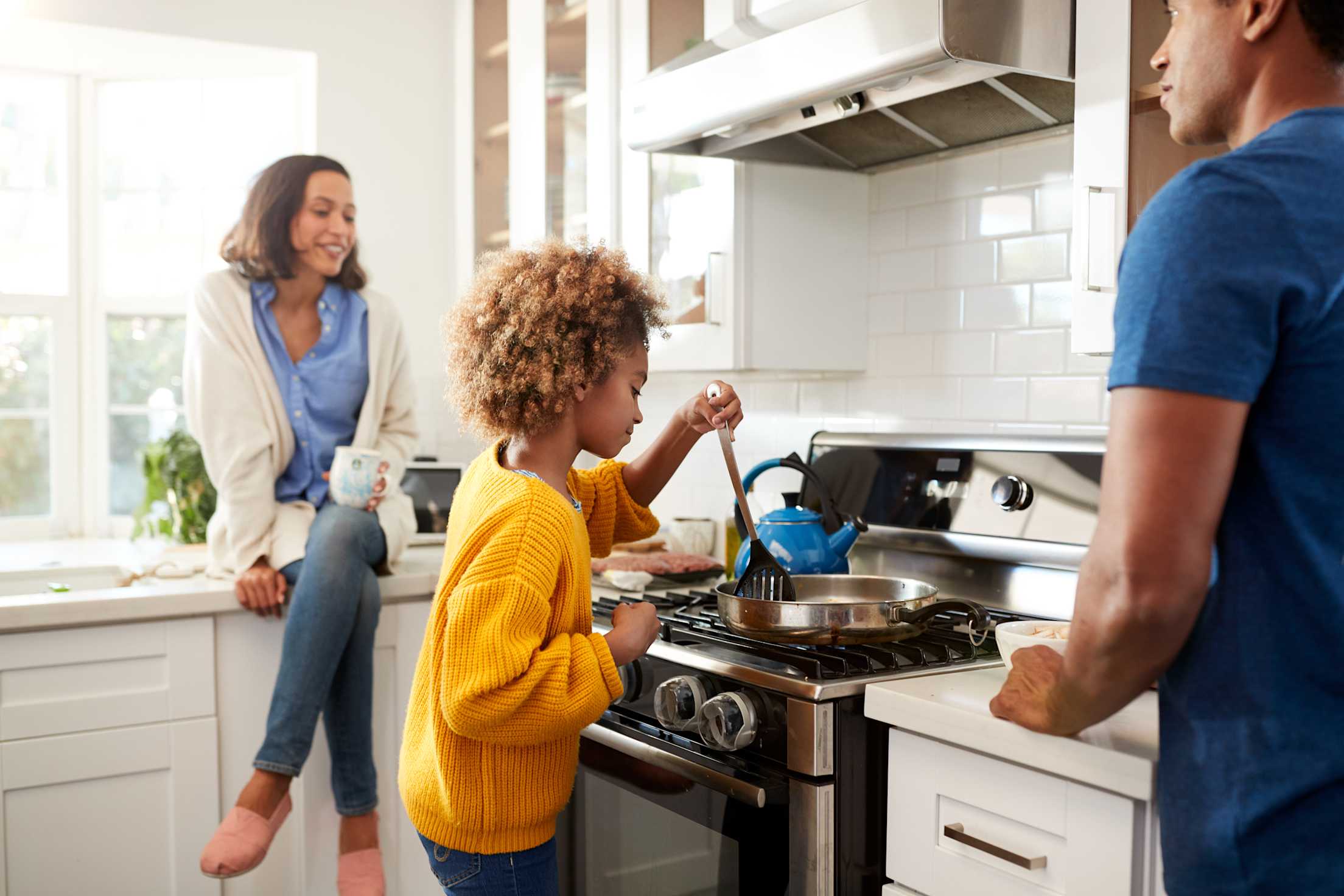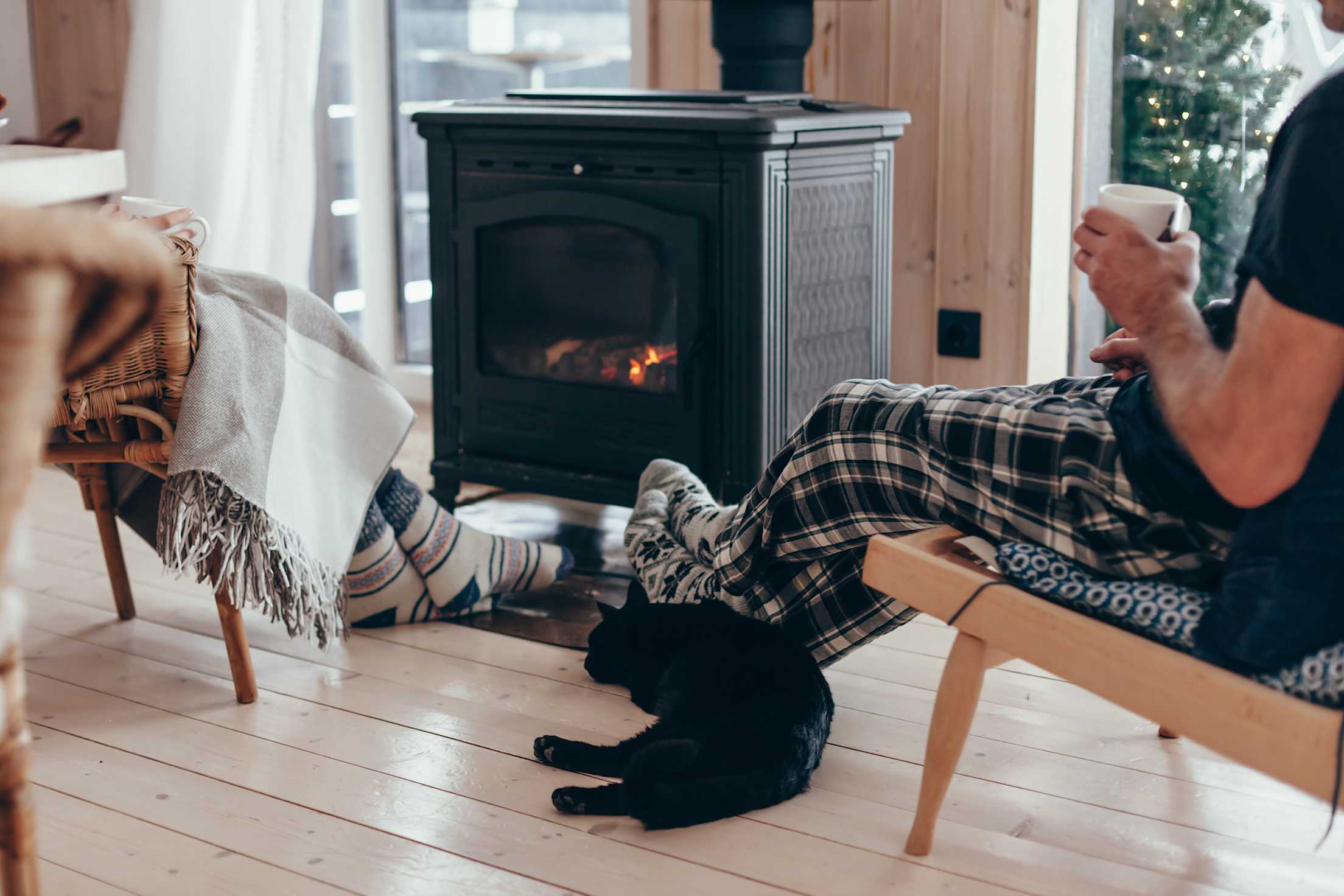
How to Improve Indoor Air Quality
Remove indoor air pollution and breathe easier with these 10 tips.

Indoor air can be two to five times more polluted than outdoor air, and, in some cases, pollution levels can be 100 times higher inside, according to the Environmental Protection Agency. Given that people in the United States spend roughly 90 percent of their time indoors, it’s important to keep the air in our homes as safe as possible. Depending on the particles and gasses involved, indoor air pollutants can have health effects that range from eye irritation, headaches, and fatigue to respiratory disease, heart disease, and cancer.
What causes poor indoor air quality in the first place? Outdoor pollution, such as particulates from vehicle exhaust or wildfire smoke, can enter through ventilation systems, open windows and doors, and cracked weatherstripping and become trapped inside. However, the majority of indoor air pollutants are released within the home, including allergens such as mold and pet dander; gases and particulates from burning gas or wood, cooking, and smoking; and volatile organic compounds—a large group of chemicals that can end up in the air—from household cleaners, building materials, and furniture.
While it’s tempting to add an air purifier to your shopping cart immediately, they are less effective than you may expect. “Most of those smaller units have so little air being cleaned per [minute], it just doesn’t lead to a change that’s measurable indoors,” says Lynn Hildemann, chair of the Department of Civil and Environmental Engineering at Stanford University. Instead, here’s how to actually improve your indoor air quality.
Let in fresh air.
When the air quality outside is good, one of the best ways to improve the air inside is to open the windows, which can remove or dilute indoor-emitted pollutants. You can check your local outdoor air quality at AirNow.gov, which uses hourly local monitor readings to report pollution levels across the United States. A reading of 50 or below means that outdoor air pollution poses little to no health risk.

Smoke and other pollutants can make their way into your home through small gaps and cracks.
Seal up gaps.
Unfortunately, outdoor air isn’t always fresh. “The best thing you can do to give you the most protection from bad outdoor air is to close things up really well,” Hildemann says. Shut your windows if your local air quality index hits 101, the start of the unhealthy range. In more severe conditions, such as heavy smoke, seal up any gaps in your home as best you can, set your air conditioner or heating system to recirculate, and use an HVAC filter with at least a MERV-13 rating, recommends Brian Christman, pulmonologist, healthy air expert, and volunteer spokesperson for the American Lung Association.
Change your filters regularly.
Whether in an HVAC system, a wall or window air conditioner, or a vacuum, cleaning or changing filters more often helps the unit perform well and trap more particulates. “When you don’t change your filters very often, the air flow through them slows down,” Hildemann says. A clogged filter can make air circulation less effective or can limit how much dust a vacuum picks up. It can also unnecessarily strain the motor.

Always turn on the range hood, if you have one, when cooking.
Use outdoor-venting stove hoods and bathroom fans.
Hildemann’s top recommendation to improve indoor air quality is to use a range fan that vents outside to directly remove fumes and particles while you cook. (If you don’t have an exhaust hood, opening a window can raise the air exchange rate and clear the air.) This is vital if you have a gas oven or cooktop. Growing evidence suggests that gas stoves are a significant source of indoor pollution, including carbon monoxide, nitrogen dioxide, and formaldehyde. Compared to electric burners, gas burners release two times as much particulate matter, which can negatively impact health.
Smart Tip: If you’re planning to replace kitchen appliances soon, consider switching to an induction stovetop or electric oven.
Running the bathroom fan or opening a window while you shower can help, too. Humidity and temperature can contribute to poor indoor air quality. They can also spur mold growth, which can lead to asthma flares and respiratory irritation.
Clean frequently.
Mop or wipe down hard surfaces and vacuum any soft ones at least once a week. “There’s so much dust that gets resuspended from carpets when you walk around,” Hildemann says. Regular deep cleaning can help, but only goes so far—if you’re planning to redo your floors, consider easier to clean low-VOC wood or linoleum over carpet.
Select cleaning products carefully.
“We’re all trying so hard to have nice clean houses, especially if we have kids with asthma or respiratory troubles, and occasionally we can go too far and make it worse,” Christman says. He names furniture polish, chlorine bleach, and ammonia (the latter two should never mix) as notable culprits that release potentially harmful volatile organic compounds or irritant gases into the air. “I recommend soap and water most of the time,” he says. And definitely avoid air fresheners, he says. These products release VOCs with their enticing scents, and they don’t actually clean the air or remove odors.

Houseplants are unlikely to make a difference in your indoor air quality.
Don’t depend on houseplants.
Houseplant likely won’t make a measurable difference in the indoor air quality. A 2019 review in Nature found that the concentration of plants it would take to make an impact is untenable: around 10 to 1,000 plants per square meter.
Never smoke or vape inside.
Smoking is the leading cause of lung cancer, and smoking indoors is particularly bad because harmful particulates get trapped and build up. Because of the documented issues with vaping additives causing acute lung injury, “You won’t find any of lung doctors, including me, recommending vaping to anybody,” says Christman.

Fireplaces and furnaces should be inspected yearly to ensure they aren't leaking carbon monoxide.
Monitor carbon monoxide.
Carbon monoxide monitors are a key component of a safe home, particularly if you have a gas stove or heater. High concentrations of carbon monoxide inside can kill you. At high levels, carbon monoxide poisoning can lead to confusion, headaches, nausea, and pain; at low levels, it can cause fatigue. Proper ventilation when cooking or burning gas or wood and letting in fresh air can help dissipate carbon monoxide and prevent it from dangerously building up.
Check your radon.
Radon is a naturally occurring radioactive gas that can lead to lung cancer, and a test is the only way to detect it. The good news is that sealing up gaps in your foundation and installing a radon reduction system may reduce levels in your home by up to 99 percent, according to the EPA. The EPA’s guide to state radon programs for homeowners and renters can help you connect with local resources.
Outsmart adversity with AAA home, auto, and life insurance policies.